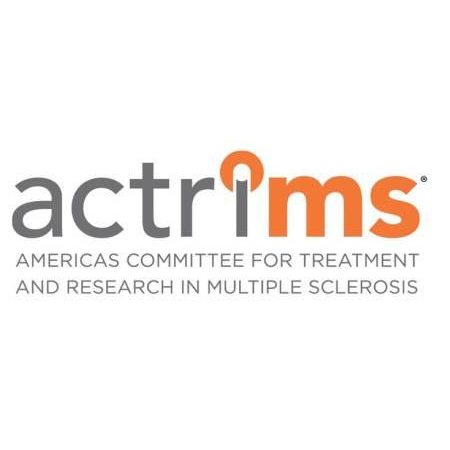New preclinical data presented at the 2024 Americas Committee for Treatment and Research in Multiple Sclerosis (ACTRIMS) Forum, February 29 to March 2, in West Palm Beach, Florida, showed that NLRX1, a mitochondrial innate immune sensor that negatively regulates several inflammatory pathways, prevented inflammatory neurodegeneration in experimental models of multiple sclerosis (MS). These findings suggest NLRX1 plays a neuroprotective role in inflammatory neurodegeneration which may occur through downregulation of inflammatory-reactive microglia and astrocytes.1
Findings demonstrated significantly worse retinal ganglion cell loss and reduced neurofilament light chain expression in the optic nerves of NLRX1 -/- mice compared with wild-type mice among both active and spontaneous experimental autoimmune encephalomyelitis (EAE) models. Notably, investigators observed no significant differences in the EAE clinical scores and no changes in the infiltration of peripheral immune cells between wild-type and NLRX1 -/- EAE mice.
Top Clinical Takeaways
- NLRX1 demonstrated a neuroprotective role in preventing inflammatory neurodegeneration in experimental models of multiple sclerosis.
- There were no significant differences in clinical scores or infiltration of peripheral immune cells compared to wild-type mice in EAE models.
- The study underscores the potential of NLRX1 as a therapeutic target for limiting inflammatory neurodegeneration.
“Chronic innate immune activation in the CNS is believed to be a significant contributor to neurodegeneration in progressive MS. Understanding the mechanisms that control reactive and inflammatory glial responses is of paramount importance for developing innovative neuroprotective strategies for progressive MS,” senior author Marjan Gharagozloo, PhD, assistant professor of neurology at Johns Hopkins Medicine, and colleagues wrote.1
READ MORE: Obesity Accelerates Disease Progression in Patients With Multiple Sclerosis
Investigators used active, spontaneous, and adoptive transfer EAE models to assess the impact of NLRX1 on inflammatory neurodegeneration in the anterior visual pathway. Authors also utilized immunohistochemistry to assess parameters including retinal ganglion cell count and optic nerve axonal degeneration, gliosis, and T-cell infiltration. The researchers performed adoptive transfer experiments using Rag/- mice lacking lymphocytes to expose the regulatory function of NLRX1 in the innate immune compartments. They then had wild-type and NLRX1 -/- primary mouse astrocytes with or without inflammatory stimulation undergo RNA sequencing.
In the adoptive transfer EAE experiments, findings revealed that NLRX1 -/-Rag-/- mice had increased Iba1 and glial fibrillary acidic protein expression in the optic nerves compared with Rag-/- mice. Additionally, investigators observed that transcriptome analysis of wild-type and NLRX1 -/- primary reactive astrocytes in vitro showed regulatory effects of NLRX1 on the TLR4/NFκB/MAPK pathway.
“This work highlights NLRX1 as a potential therapeutic target for limiting inflammatory neurodegeneration caused by the activation of innate immune system. NLRX1 and other innate immune system regulators of inflammatory glia should continue to be studied to facilitate the development of novel therapeutic strategies for progressive MS,” Gharagozloo et al noted.1 “Towards this end, we are currently defining the ability of novel NLRX1-activating compounds to decrease glia activation and limit neurodegeneration in EAE and other relevant models.”
A similar study on mouse model of MS conducted by Gharagozloo showed that about half of the resulting progeny developed spontaneous EAE was associated with severe demyelination and inflammation in the central nervous system (CNS). These findings suggested the importance of NLRX1 in controlling the early stages of CNS inflammation and prevention of the onset of spontaneous autoimmunity.2 In addition, these findings revealed that genetic susceptibility to EAE was observed in the innate immune compartment. Additional results showed that NLRX1 inhibited the subclinical stages of microglial activation and prevented the generation of neurotoxic astrocytes that induced neuronal and oligodendrocyte death in vitro. Also, investigators observed in the research that there are several mutations of NLRX1 that run in MS-affected families.
Click here for more coverage of ACTRIMS 2024.
REFERENCES
1. Gill J, Garton T, Smith MD, et al. Innate Immune Regulator NLRX1 Protects the Anterior Visual Pathway Against Inflammatory Neurodegeneration. Presented at ACTRIMS Forum 2024; February 29 to March 2; West Palm Beach, Florida. CE1.2.
2. Gharagozloo M, Mahmoud S, Simard C, et al. NLRX1 inhibits the early stages of CNS inflammation and prevents the onset of spontaneous autoimmunity. PLoS Biol. 2019;17(9):e3000451. Published 2019 Sep 16. doi:10.1371/journal.pbio.3000451




































